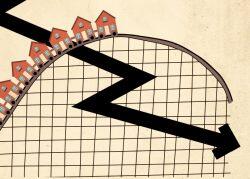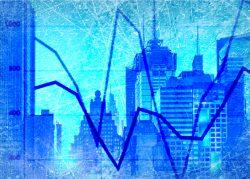 U.S. home price growth slows for first time in five months
U.S. home price growth slows for first time in five months
Trending
Priced-out buyers trigger drop in pending home sales
Contract signings slowed across US in June

Homebuyers are still slowing their pandemic-fueled, contract-signing binge in response to the triple whammy of rising mortgage rates, high housing prices and low inventory.
The number of pending home sales dipped by 8.6 percent in June after a slight uptick in May, resuming the previous six months’ trend of declines, a report from the National Association of Realtors showed Wednesday.
June’s contract signings dropped a hefty 20 percent from last year. Meanwhile, housing was 80 percent more expensive than June 2019, taking mortgage rates into account.
The U.S. housing market has slowed thanks to a confluence of factors pushing housing prices and lending rates up, while both supply and household budgets are crimped by inflation.
“Contract signings to buy a home will keep tumbling down as long as mortgage rates keep climbing,” predicted NAR chief economist Lawrence Yun. Contract signings are an indicator of sales in the months ahead.
Read more
 U.S. home price growth slows for first time in five months
U.S. home price growth slows for first time in five months
 Bidding wars drop to lowest level since pandemic
Bidding wars drop to lowest level since pandemic
 The stats don’t lie: NY’s housing markets are cooling
The stats don’t lie: NY’s housing markets are cooling
While the drop in pending home sales last month pervaded the country, the West felt it most, with a 15.9 percent decrease from the previous month. That region also has the worst housing affordability, according to an NAR index that factors in prices and household income.
Evidence that the housing market is slowing has been cropping up across several indicators, such as the Case-Shiller home price index. Although home prices remain at historic highs, they may be plateauing based on a slight drop in the rate of increase last month.
In an effort to rein in inflation, the Federal Reserve has raised interest rates three times this year, leading to the higher cost of mortgages. The latest rate hike came today, when Fed Chair Jerome Powell announced a second 0.75 percentage point increase.
But, Yun said, current trends might soon end.
“There are indications that mortgage rates may be topping [out] or very close to a cyclical high in July,” said the economist. “If so, pending contracts should also begin to stabilize.”




